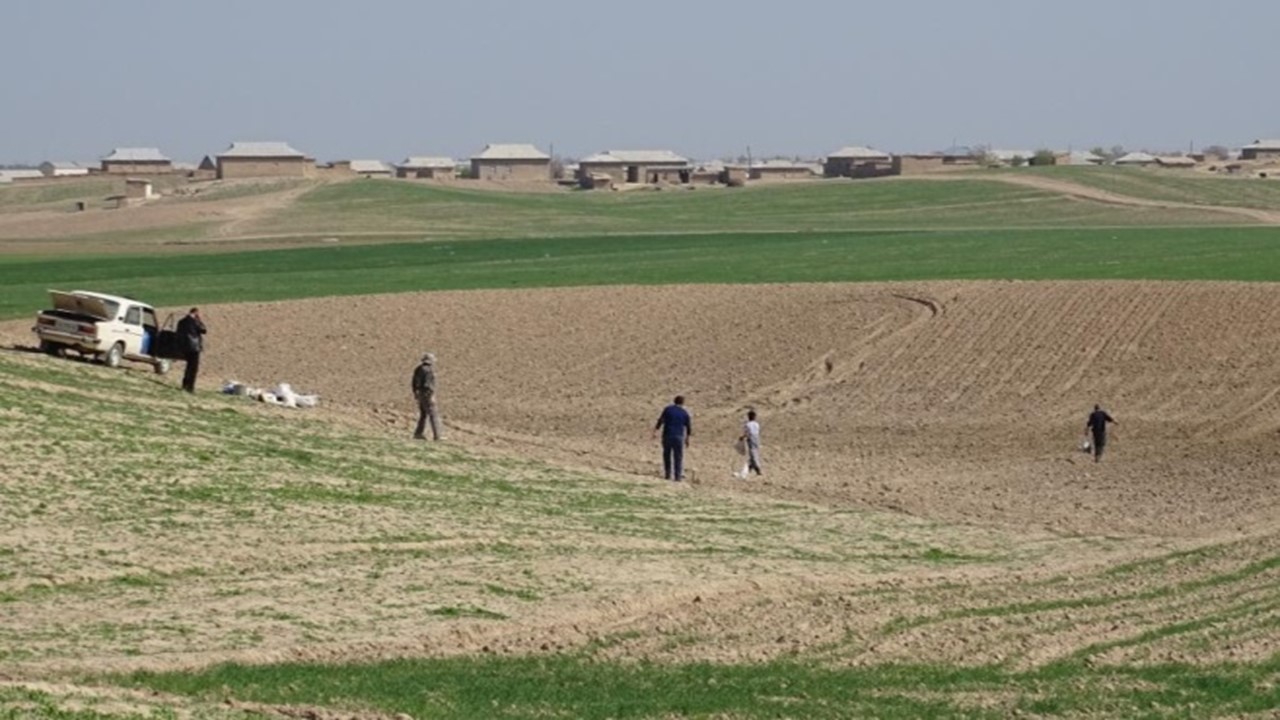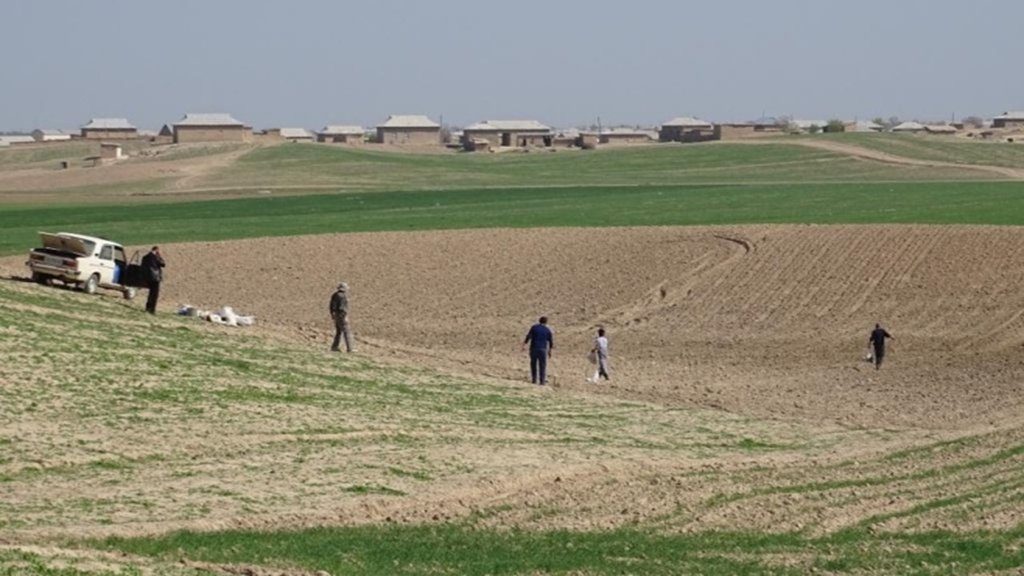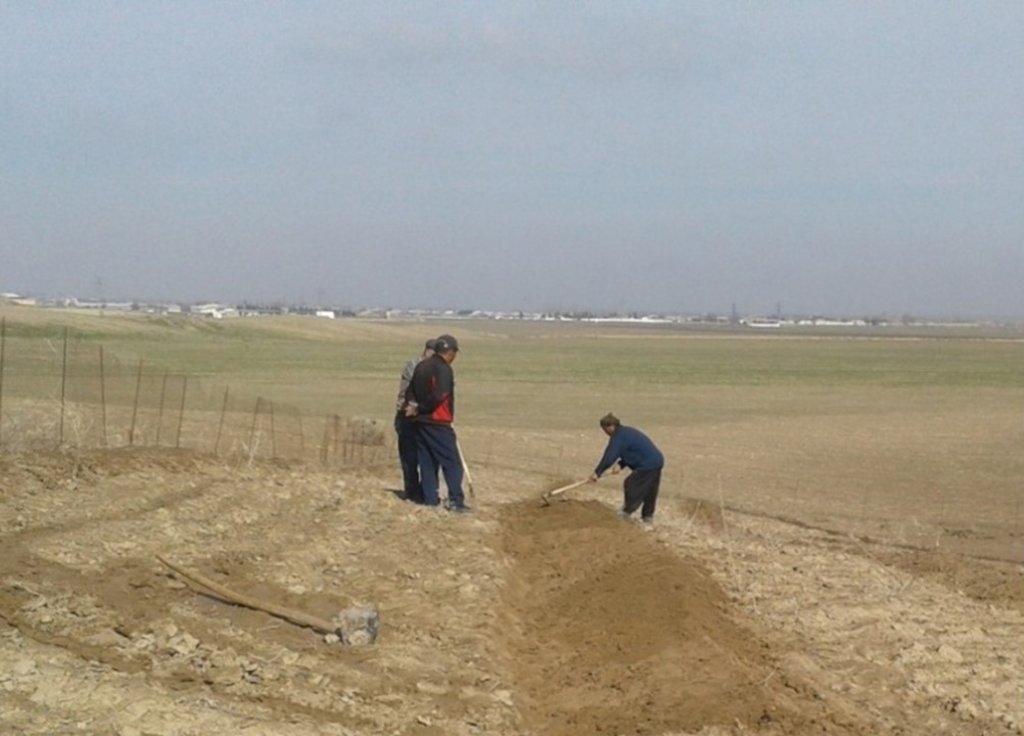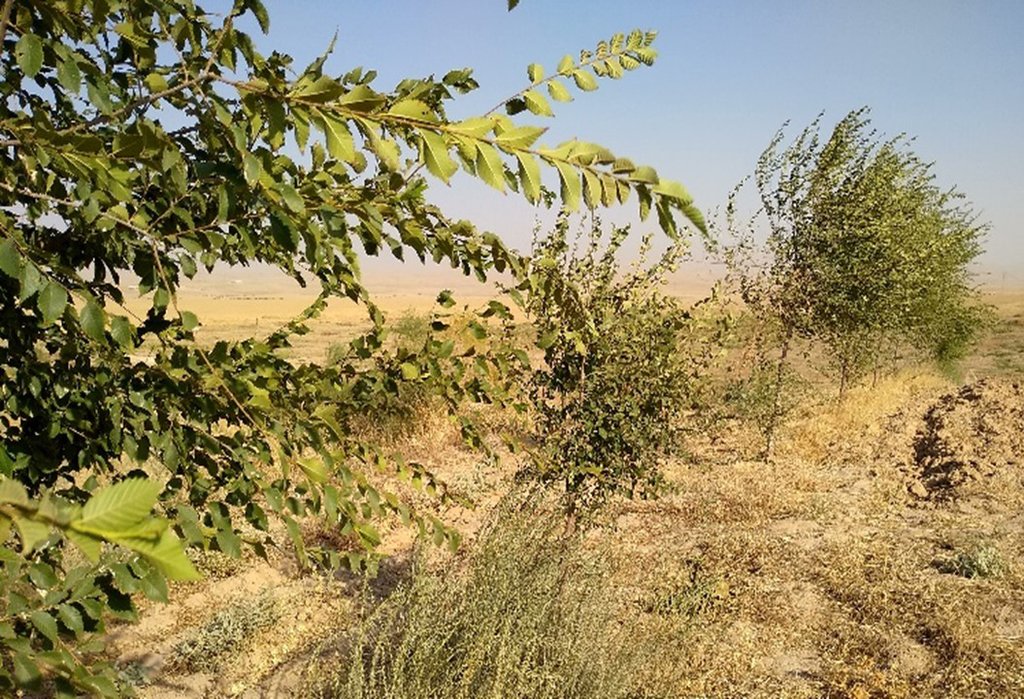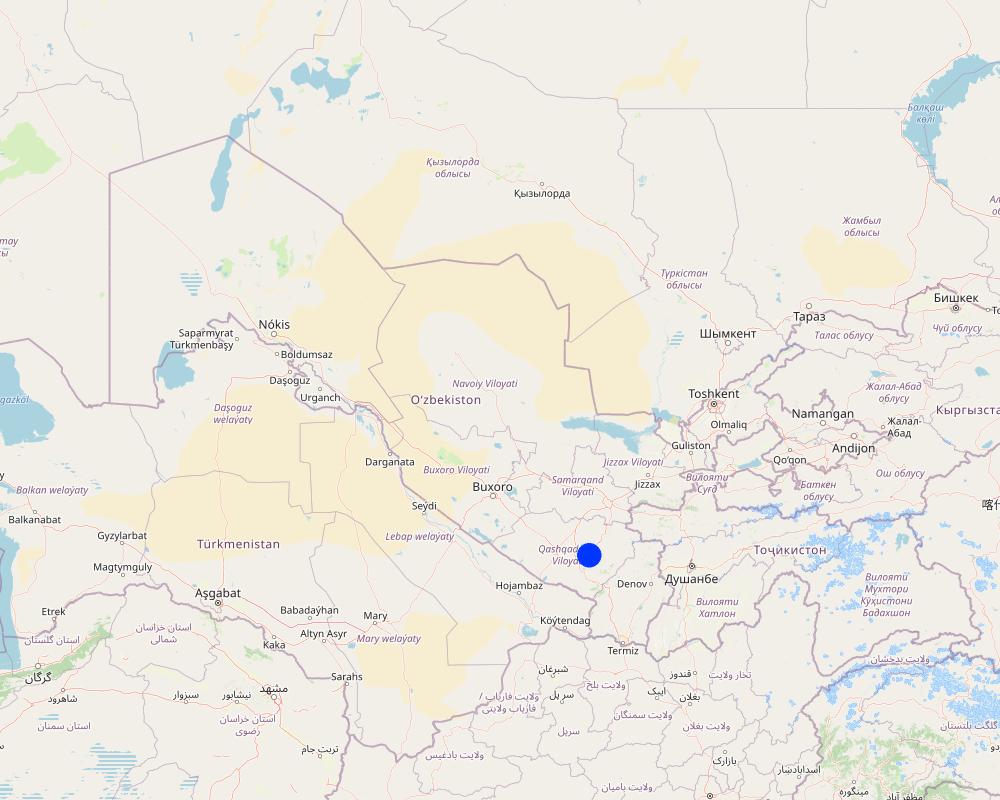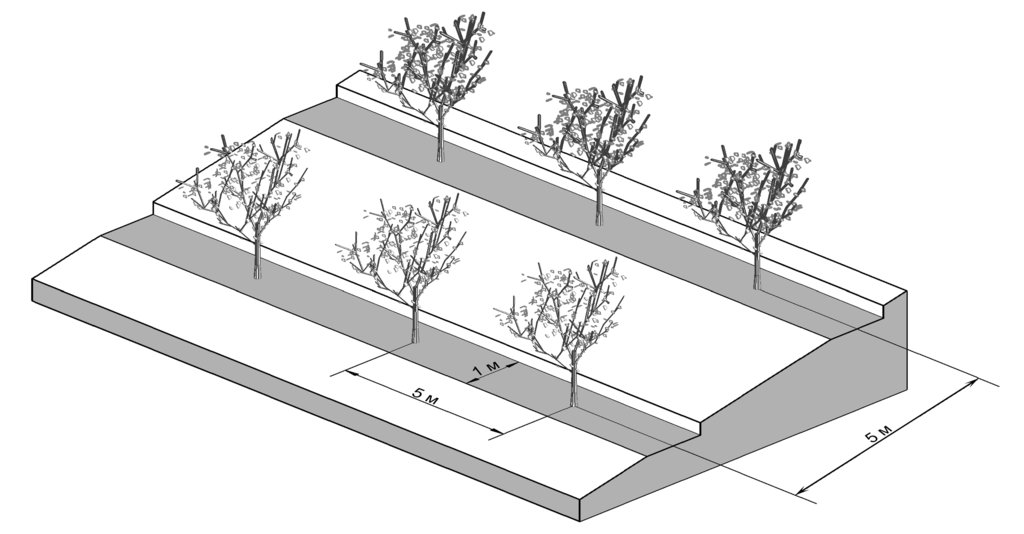Agroforestry reclamation of rainfed areas [Uzbekistan]
- Creation:
- Update:
- Compiler: Rustam Ibragimov
- Editor: –
- Reviewers: Olga Andreeva, Hayot Ibrakhimov
Агролесомелиорация богарных земель
technologies_6209 - Uzbekistan
View sections
Expand all Collapse all1. General information
1.2 Contact details of resource persons and institutions involved in the assessment and documentation of the Technology
Key resource person(s)
SLM specialist:
Mukimov Tolib Khudaykulovich
Research Institute of Karakul Sheep Breeding and Desert Ecology, Samarkand
Uzbekistan
land user:
Oltinboev Sherzod
Farm "Oltynboev Yeri", Kamashi district, Kashkadarya region
Uzbekistan
Name of project which facilitated the documentation/ evaluation of the Technology (if relevant)
Integrated natural resources management in drought-prone and salt-affected agricultural production landscapes in Central Asia and Turkey ((CACILM-2))Name of the institution(s) which facilitated the documentation/ evaluation of the Technology (if relevant)
Design and Research UZGIP Institute, Ministry of Water Resources (UzGIP) - Uzbekistan1.3 Conditions regarding the use of data documented through WOCAT
The compiler and key resource person(s) accept the conditions regarding the use of data documented through WOCAT:
Yes
1.4 Declaration on sustainability of the described Technology
Is the Technology described here problematic with regard to land degradation, so that it cannot be declared a sustainable land management technology?
No
2. Description of the SLM Technology
2.1 Short description of the Technology
Definition of the Technology:
Planting drought-resistant tree species on sloping rainfed areas will increase the productivity of rainfed land and local incomes. Local afforestation of rainfed arable land will provide environmental benefits such as reducing the risk of water erosion, mitigating the impact of climate change by sequestering CO2 in wood biomass and soil, and will also contribute to overall environmental health.
2.2 Detailed description of the Technology
Description:
This technology was implemented within the framework of the GEF/FAO project "Decision Support for the Promotion and Dissemination of Sustainable Land Management" (DS-SLM) (2015-2018) on a plot of rainfed arable land in the Kamashi district of the Kashkadarya region. Rainfed arable land in Uzbekistan occupies about 743 thousand ha, located in the foothill zone on the adyrs (foothills). The slopes of rainfed land are subject to water erosion, and hence, implementation of special techniques and specific measures to grow crops is needed to preserve the upper fertile soil layer and conserve soil moisture. The technology of agroforestry reclamation of rainfed arable land consists of creation of drought-resistant tree species plantations on small terraces. Implementation of the technology includes the following activities:
1. Traditional land preparation – plowing, harrowing, leveling and compaction of upper soil layer,
2. Manually preparing small, 1 m wide terraces at a distance of 5 m to each other, with a sloping opposite to the general slope,
3. Fencing an isolated agroforestry plot with a metal fence or other means to prevent damaging by livestock,
4. Planting seedlings during spring (in March), in 5 x 5 m plots,
5. Further activities include caring for the plantings:
- simple drip irrigation using polyethylene bottles (during the first 2-3 years),
- application of fertilizers (manure, compost),
- implementation of measures to combat pests and diseases. In early spring (before the buds appear), trees are treated against pests with copper sulfate at the rate of 100-150 grams per 10 liters of water. In March, tree trunks are whitewashed with lime. The row spacings are treated with 57% fufanon at 0.6-1.0 l/ha, or 30% benzophosphate at a rate of 2.0-2.3 kg/ha.
The cost of implementing the technology is quite high - about 1200 US dollars, which acts as a deterrent factor to its widespread use. The main costs relate to the initial period - making terraces, purchasing and planting seedlings. Later, the costs are reduced - there is no need for irrigation, and weed infestation is reduced as a result of competition with matured trees.
A feature of rainfed land conditions in the territory of technology implementation is the low precipitation. Climate and weather determine the low and unstable yield of winter wheat, crop that is traditionally grown on dryland areas. To increase the productivity of dryland farming, areas under drought-resistant crops, such as safflower, are currently expanded. Finding alternative solutions and supporting local communities whose main occupation is rainfed agriculture and livestock breeding is of paramount importance to improving living standards and well-being.
2.3 Photos of the Technology
2.5 Country/ region/ locations where the Technology has been applied and which are covered by this assessment
Country:
Uzbekistan
Region/ State/ Province:
Kamashi district, Kashkadarya region
Further specification of location:
Kamashi town
Specify the spread of the Technology:
- applied at specific points/ concentrated on a small area
Is/are the technology site(s) located in a permanently protected area?
No
Map
×2.6 Date of implementation
Indicate year of implementation:
2015
If precise year is not known, indicate approximate date:
- less than 10 years ago (recently)
2.7 Introduction of the Technology
Specify how the Technology was introduced:
- through projects/ external interventions
3. Classification of the SLM Technology
3.1 Main purpose(s) of the Technology
- reduce, prevent, restore land degradation
- preserve/ improve biodiversity
- mitigate climate change and its impacts
3.2 Current land use type(s) where the Technology is applied
Land use mixed within the same land unit:
No
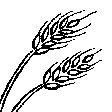
Cropland
- Annual cropping
3.3 Has land use changed due to the implementation of the Technology?
Has land use changed due to the implementation of the Technology?
- Yes (Please fill out the questions below with regard to the land use before implementation of the Technology)
Land use mixed within the same land unit:
Yes
Specify mixed land use (crops/ grazing/ trees):
- Agroforestry

Cropland
- Annual cropping
Annual cropping - Specify crops:
- oilseed crops - sunflower, rapeseed, other
3.4 Water supply
Water supply for the land on which the Technology is applied:
- rainfed
3.5 SLM group to which the Technology belongs
- agroforestry
- improved ground/ vegetation cover
- cross-slope measure
3.6 SLM measures comprising the Technology
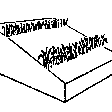
vegetative measures
- V1: Tree and shrub cover
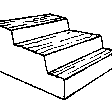
structural measures
- S1: Terraces
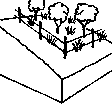
management measures
- M1: Change of land use type
3.7 Main types of land degradation addressed by the Technology
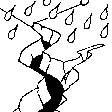
soil erosion by water
- Wt: loss of topsoil/ surface erosion
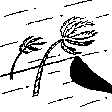
soil erosion by wind
- Et: loss of topsoil
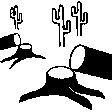
biological degradation
- Bc: reduction of vegetation cover
3.8 Prevention, reduction, or restoration of land degradation
Specify the goal of the Technology with regard to land degradation:
- reduce land degradation
4. Technical specifications, implementation activities, inputs, and costs
4.1 Technical drawing of the Technology
Technical specifications (related to technical drawing):
Small terraces sloping opposite to the general slope are created manually. Mixed tree species (fruit trees - almonds and decorative trees - Elm (Ulmus), etc.) are planted on manually prepared small terraces. Tree planting scheme: 5 x 5 m. Terrace width: 1 m, distance between terraces: 5 m.
4.2 General information regarding the calculation of inputs and costs
Specify how costs and inputs were calculated:
- per Technology area
Indicate size and area unit:
1 ha
Specify currency used for cost calculations:
- USD
Indicate average wage cost of hired labour per day:
around 10 US dollars
4.3 Establishment activities
| Activity | Timing (season) | |
|---|---|---|
| 1. | Plowing, harrowing, leveling and compacting upper soil layer | February |
| 2. | Handmade terraces | February |
| 3. | Fencing of the plot | February |
| 4. | Planting seedlings | February-March |
| 5. | Watering for seedling development | March-October |
Comments:
All activities must be done within a short time frame in order to complete planting in early spring (late February - early March, depending on weather) to make maximum use of favorable weather conditions.
4.4 Costs and inputs needed for establishment
| Specify input | Unit | Quantity | Costs per Unit | Total costs per input | % of costs borne by land users | |
|---|---|---|---|---|---|---|
| Labour | Workers' labor (making terraces, planting, caring for trees) | ha | 1.0 | 436.0 | 436.0 | |
| Equipment | Use of machinery (plowing, harrowing, leveling and compacting upper soil layer) | ha | 1.0 | 87.0 | 87.0 | |
| Plant material | Seedlings | piece | 280.0 | 3.0 | 840.0 | |
| Construction material | Fencing the plot with metal fence | 1.0 | 349.0 | 349.0 | ||
| Total costs for establishment of the Technology | 1712.0 | |||||
| Total costs for establishment of the Technology in USD | 1712.0 | |||||
If land user bore less than 100% of costs, indicate who covered the remaining costs:
Project
4.5 Maintenance/ recurrent activities
| Activity | Timing/ frequency | |
|---|---|---|
| 1. | Caring for crops (irrigation using platic bottles during the first 2 years) | during plant growth period |
| 2. | Pest control: treatment with copper sulfate, fufanon, benzophosphate | In early spring before the budding phase |
| 3. | Pest control: whitewashing tree trunks with lime | during plant growth period when needed |
4.6 Costs and inputs needed for maintenance/ recurrent activities (per year)
| Specify input | Unit | Quantity | Costs per Unit | Total costs per input | % of costs borne by land users | |
|---|---|---|---|---|---|---|
| Labour | Work of a tree care | ha | 1.0 | 200.0 | 200.0 | 100.0 |
| Equipment | Use of agricultural machinery | ha | 1.0 | 60.0 | 60.0 | 100.0 |
| Other | Protecting the plot | ha | 1.0 | 60.0 | 60.0 | 100.0 |
| Total costs for maintenance of the Technology | 320.0 | |||||
| Total costs for maintenance of the Technology in USD | 320.0 | |||||
Comments:
The cost of planting trees is related to the first year of technology implementation. Other costs include activities to caring for the plantings, replacing dried trees and protection against damage
4.7 Most important factors affecting the costs
Describe the most determinate factors affecting the costs:
The highest costs are related to making terraces, purchasing seedlings and fencing the area. However, fencing the area can be done in some other, cheaper ways, e.g., using other materials instead of metal fence
5. Natural and human environment
5.1 Climate
Annual rainfall
- < 250 mm
- 251-500 mm
- 501-750 mm
- 751-1,000 mm
- 1,001-1,500 mm
- 1,501-2,000 mm
- 2,001-3,000 mm
- 3,001-4,000 mm
- > 4,000 mm
Specify average annual rainfall (if known), in mm:
327.00
Specifications/ comments on rainfall:
The duration of the growing season of natural vegetation is 90 days.
Indicate the name of the reference meteorological station considered:
Kamashi
Agro-climatic zone
- semi-arid
Growing season duration (GSD) is the period during which the amount of precipitation is not less than half of total potential evaporation and average temperature is above 6.5°C
5.2 Topography
Slopes on average:
- flat (0-2%)
- gentle (3-5%)
- moderate (6-10%)
- rolling (11-15%)
- hilly (16-30%)
- steep (31-60%)
- very steep (>60%)
Landforms:
- plateau/plains
- ridges
- mountain slopes
- hill slopes
- footslopes
- valley floors
Altitudinal zone:
- 0-100 m a.s.l.
- 101-500 m a.s.l.
- 501-1,000 m a.s.l.
- 1,001-1,500 m a.s.l.
- 1,501-2,000 m a.s.l.
- 2,001-2,500 m a.s.l.
- 2,501-3,000 m a.s.l.
- 3,001-4,000 m a.s.l.
- > 4,000 m a.s.l.
Indicate if the Technology is specifically applied in:
- not relevant
Comments and further specifications on topography:
520 m above sea level, slope steepness is 8-16%
5.3 Soils
Soil depth on average:
- very shallow (0-20 cm)
- shallow (21-50 cm)
- moderately deep (51-80 cm)
- deep (81-120 cm)
- very deep (> 120 cm)
Soil texture (topsoil):
- fine/ heavy (clay)
Soil texture (> 20 cm below surface):
- fine/ heavy (clay)
Topsoil organic matter:
- low (<1%)
5.4 Water availability and quality
Ground water table:
5-50 m
Availability of surface water:
poor/ none
Water quality (untreated):
good drinking water
Water quality refers to:
ground water
Is water salinity a problem?
No
Is flooding of the area occurring?
No
Comments and further specifications on water quality and quantity:
There are no sources of surface water for drinking purposes in the rainfed areas. Underground water from wells or imported water is used for drinking.
5.5 Biodiversity
Species diversity:
- low
Habitat diversity:
- low
Comments and further specifications on biodiversity:
The rainfed zone is characterized by poor species diversity due to the lack of natural moisture. The main crops of rainfed agriculture are winter wheat and barley, safflower, and sunflower. By the end of summer, the soil surface becomes virtually completely practically bare, without vegetation.
5.6 Characteristics of land users applying the Technology
Sedentary or nomadic:
- Sedentary
Market orientation of production system:
- mixed (subsistence/ commercial)
Off-farm income:
- > 50% of all income
Relative level of wealth:
- average
Individuals or groups:
- individual/ household
Level of mechanization:
- mechanized/ motorized
Gender:
- men
Age of land users:
- middle-aged
5.7 Average area of land used by land users applying the Technology
- < 0.5 ha
- 0.5-1 ha
- 1-2 ha
- 2-5 ha
- 5-15 ha
- 15-50 ha
- 50-100 ha
- 100-500 ha
- 500-1,000 ha
- 1,000-10,000 ha
- > 10,000 ha
Is this considered small-, medium- or large-scale (referring to local context)?
- medium-scale
Comments:
The average area of farms is within 100 ha, leased to farmers by the state for a period of 50 years. The area of dehkan farms is within 0.35 ha with private ownership of land and the right to buy, sell and inheritable transfer.
5.8 Land ownership, land use rights, and water use rights
Land ownership:
- state
- individual, titled
Land use rights:
- leased
- individual
Water use rights:
- individual
Are land use rights based on a traditional legal system?
Yes
5.9 Access to services and infrastructure
health:
- poor
- moderate
- good
education:
- poor
- moderate
- good
technical assistance:
- poor
- moderate
- good
employment (e.g. off-farm):
- poor
- moderate
- good
markets:
- poor
- moderate
- good
energy:
- poor
- moderate
- good
roads and transport:
- poor
- moderate
- good
drinking water and sanitation:
- poor
- moderate
- good
financial services:
- poor
- moderate
- good
6. Impacts and concluding statements
6.1 On-site impacts the Technology has shown
Socio-economic impacts
Production
product diversity
Water availability and quality
irrigation water availability
Income and costs
farm income
diversity of income sources
Ecological impacts
Soil
soil cover
Biodiversity: vegetation, animals
Vegetation cover
plant diversity
Climate and disaster risk reduction
emission of carbon and greenhouse gases
micro-climate
6.2 Off-site impacts the Technology has shown
damage on public/ private infrastructure
6.3 Exposure and sensitivity of the Technology to gradual climate change and climate-related extremes/ disasters (as perceived by land users)
Gradual climate change
Gradual climate change
| Season | increase or decrease | How does the Technology cope with it? | |
|---|---|---|---|
| annual temperature | increase | well | |
| seasonal temperature | summer | increase | not well |
| annual rainfall | decrease | not well | |
| seasonal rainfall | spring | decrease | not well at all |
| seasonal rainfall | summer | decrease | moderately |
| seasonal rainfall | autumn | decrease | not well at all |
Climate-related extremes (disasters)
Climatological disasters
| How does the Technology cope with it? | |
|---|---|
| drought | moderately |
Other climate-related consequences
Other climate-related consequences
| How does the Technology cope with it? | |
|---|---|
| extended growing period | very well |
6.4 Cost-benefit analysis
How do the benefits compare with the establishment costs (from land users’ perspective)?
Short-term returns:
negative
Long-term returns:
positive
How do the benefits compare with the maintenance/ recurrent costs (from land users' perspective)?
Short-term returns:
negative
Long-term returns:
positive
Comments:
Long-term positive benefits: conservation and enhancement of biodiversity, increased incomes, employment
6.5 Adoption of the Technology
- single cases/ experimental
Of all those who have adopted the Technology, how many did so spontaneously, i.e. without receiving any material incentives/ payments?
- 0-10%
6.6 Adaptation
Has the Technology been modified recently to adapt to changing conditions?
No
6.7 Strengths/ advantages/ opportunities of the Technology
| Strengths/ advantages/ opportunities in the land user’s view |
|---|
| Additional source of income |
| Strengths/ advantages/ opportunities in the compiler’s or other key resource person’s view |
|---|
| Additional source of income |
| Improving the agricultural landscape |
| Preventing erosion |
6.8 Weaknesses/ disadvantages/ risks of the Technology and ways of overcoming them
| Weaknesses/ disadvantages/ risks in the land user’s view | How can they be overcome? |
|---|---|
| High cost of implementation and long period to wait for benefits. | Use a loan, look for additional sources of income for the period until the technology starts to generate income |
| Lack of information | Conducting trainings, workshops |
| Weaknesses/ disadvantages/ risks in the compiler’s or other key resource person’s view | How can they be overcome? |
|---|---|
| Long period of waiting for benefits | Use a loan, look for additional sources of income for the period until the technology starts to generate income |
7. References and links
7.1 Methods/ sources of information
- field visits, field surveys
- interviews with land users
4 persons were interviewed
- interviews with SLM specialists/ experts
3 persons
- compilation from reports and other existing documentation
Reports “Decision Support for Mainstreaming and Scaling up of Sustainable Land Management” (DS-SLM)
Comments:
Field surveys were carried out in 2015-2017.
7.2 References to available publications
Title, author, year, ISBN:
Khamzina T.I. et al. PRACTICES AND TECHNOLOGIES FOR SUSTAINABLE USE OF IRRIGATED AND RAINFED AREAS SUBJECT TO SALINIZATION AND DROUGHT, 2017
Available from where? Costs?
Collection of scientific and practical conference. Tashkent
Links and modules
Expand all Collapse allLinks
No links
Modules
No modules


